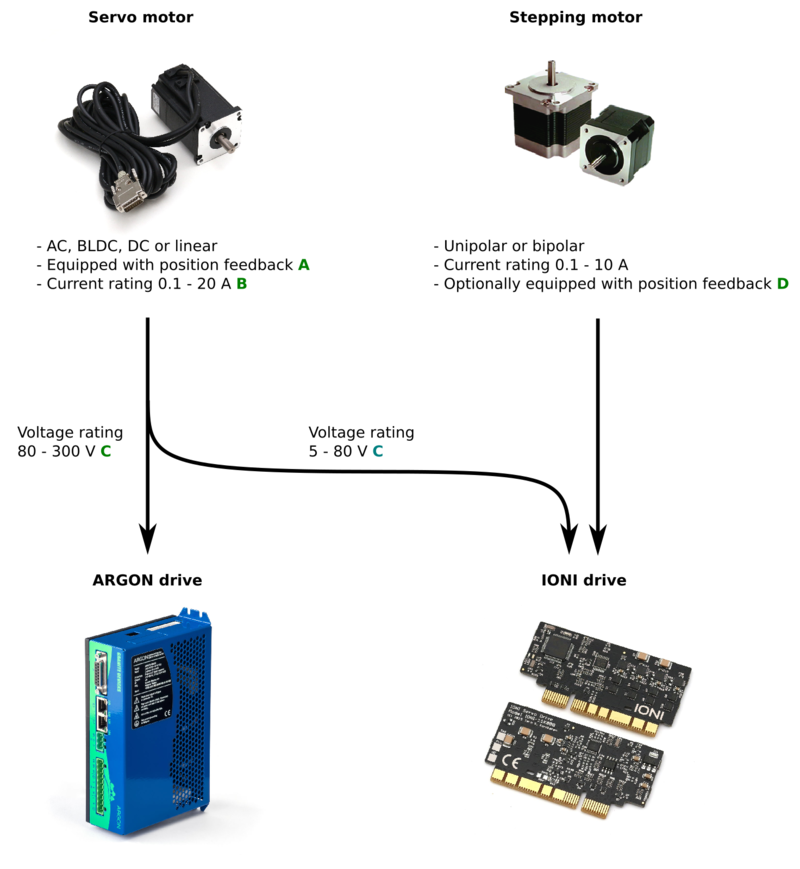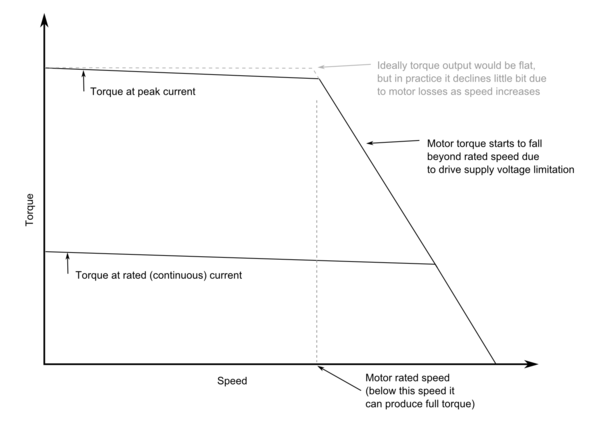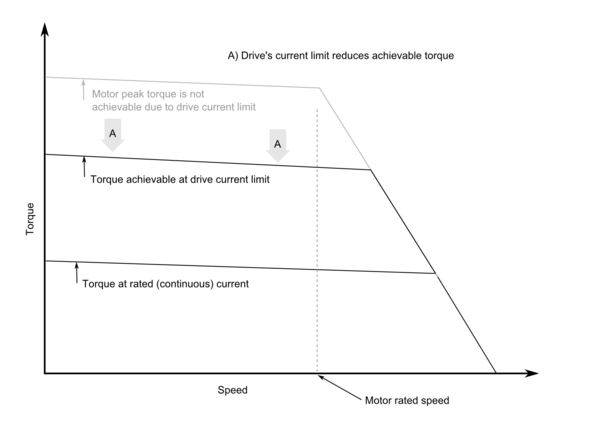Motor compatibility guide
This page guides through matching the Granite Devices drive and various kinds of servo and stepping motors.
Contents
Overview
Note A (position feedback device)
Servo motor requires a position feedback device to operate with servo drive. It is recommended to have a position sensor that has resolution of at least 1000 increments (a.k.a. counts) per revolution. The higher the resolution, the better servo stiffness can be achieved.
Feedback device type must be one of the supported types. Following types are supported by different drive models:
- ARGON
- Incremental quadrature encoder
- Resolver (with separately available Argon resolver adapter)
- More than 99% of encoders are directly compatible, for technical details of compatible types see ARGON motor compatibility page.
- IONI
- Incremental quadrature encoder
- SinCos encoder
- More than 99% of encoders are directly compatible, for technical details of compatible types see IONI motor compatibility page.
About Hall sensors
Many AC/BLDC motors come also with Hall sensors. Hall sensors are supported by ARGON & IONI drives but these are not required for operation and can be left unconnected. Connecting & enabling Hall sensor can be used to speed up motor initialization at power-on. For more info, see Phasing a.k.a. phase search.
Unsupported feedback devices
Feedback devices that are not listed as supported, can be assumed to be unsupported and unsuitable. Examples of such types are:
- Tachogenerator/tachometer
- Serial data encoders (BiSS, SSI, EnDat etc)
In case of unsupported type, motor can be usually made compatibly by installing a compatible encoder in it. Compatible encoders are widely available in may sizes and fit most motors in the market. See list of compatible feedback devices.
Note B (current rating)
Current is the component to produce torque on motor. Motor torque is directly proportional to torque generated with equation T=I*K where T is torque, I is current and K is the torque constant of motor (motor specific value, often defined in data sheet).
If drive is unable to drive (or is set deliberately to limit current) below motor ratings, it will cause the obtainable peak torque to be reduced. The reduction is proportional to the current reduction. For example, if motor is rated for 30A and drive can supply 20A, then torque is reduced by ratio 20/30 thus maximum obtainable torque is 67% of motor maximum rating.
| In many practical machines, maximum torque is not required which makes even undersized drive suitable. Drive or motor will not have any reliability issues by that mismatch. |
Note C (voltage rating)
Note D (stepping motor feedback)
In no event the Product Information or parts hereof shall be regarded as guarantee of conditions or characteristics. The Product Information or any part thereof may also not be regarded as a warranty of any kind. No liability of any kind shall be assumed by Author with respect to Product Information or any use made by you thereof, nor shall Author indemnify you against or be liable for any third party claims with respect to such information or any use thereof.
As content of this Wiki may be edited by user community, Granite Devices Oy or it's affiliates do not take any responsibility of the contents of this Wiki. Use information at your own risk. However, Granite Devices staff attempts to review all changes made to this Wiki and keep information trustworthy.
Without written consent, Granite Devices' Products or Intellectual Property shall not be used in situations or installations where living beings, material property, or immaterial property could be harmed by the operation, features or failures of Product. Products may only be used in a way where hazards like moving parts, electric shock, laser radiation, or fire can't be realized even if the content of this Wiki would suggest otherwise.


